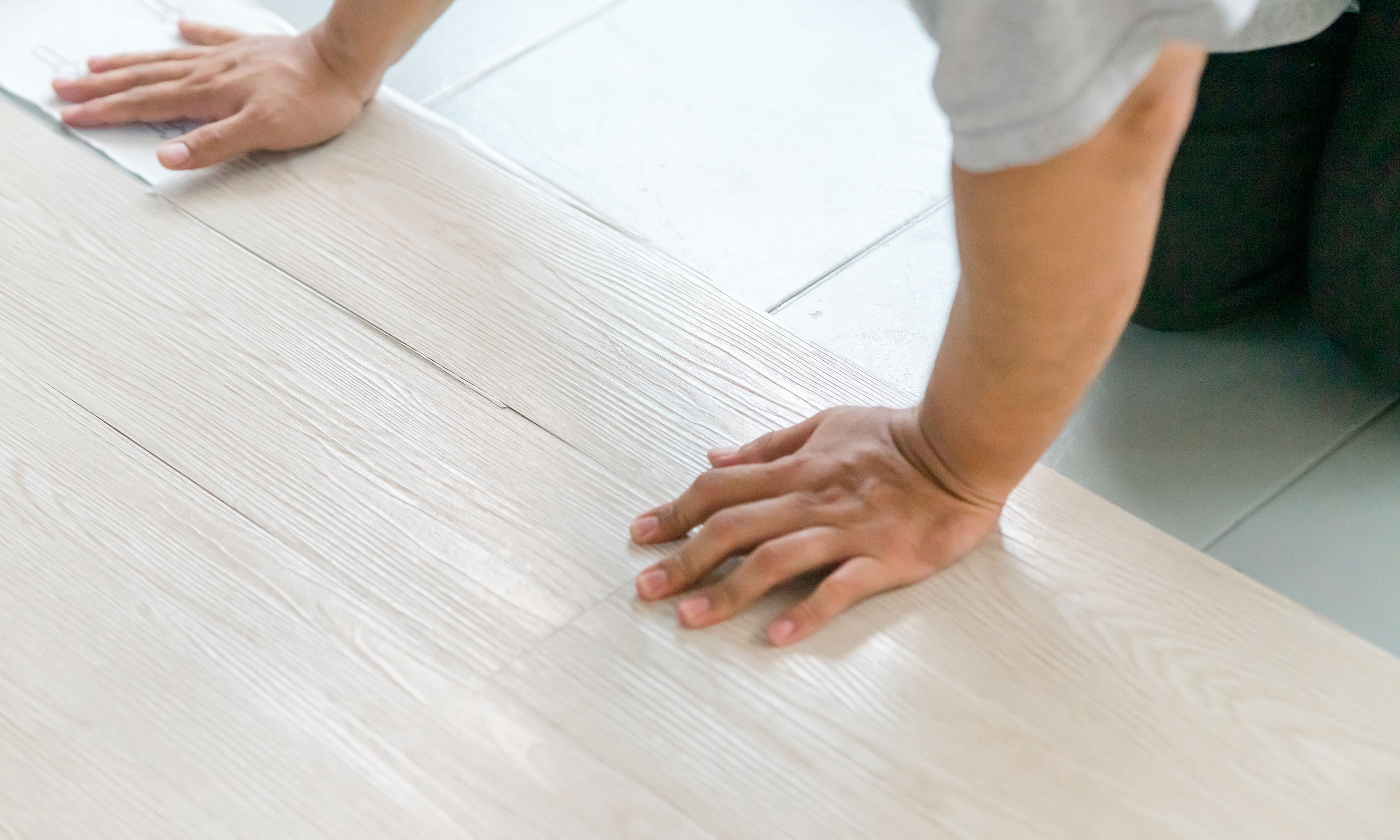

Learning how to install vinyl plank flooring is a do-it-yourself project even beginners can take on, and it needn’t be very time consuming either.
The beauty of vinyl plank flooring is that it looks like solid hardwood – one of the most popular types of flooring out there. But vinyl plank doesn’t have the same price tag as hardwood, so that even a newbie DIYer can feel confident installing it.
How to install vinyl flooring planks
Vinyl plank flooring is a modern and popular type of vinyl flooring and – as the name indicates – it’s the version that comes in plank format rather than as sheets or tiles.
Different vinyl planks have different laying methods, but they’re all designed for simple installation and each can be used over any subfloor that’s rigid and level. In other words, generally it isn’t necessary to have an underlayment for vinyl plank flooring.
You can opt for interlocking vinyl plank flooring or GripStrip vinyl plank flooring, which both create floating floors, or you can use a glue-down vinyl plank flooring that sticks to the subfloor.
To install vinyl plank flooring, follow the steps below.
1. Assemble your kit
To install vinyl flooring planks, you will need:
- Tape measure
- Pencil
- Straightedge
- Utility knife, vinyl cutter or possibly jigsaw or miter saw
- Tapping block and rubber mallet (depending on specific vinyl plank choice)
- Hand roller (depending on specific vinyl plank choice)
- Floor roller (depending on specific vinyl plank choice)
2. Measure the floor
You’ll need to accurately measure the floor area so you can buy the right amount of vinyl plank flooring. Add between 10 and 20 per cent for wastage.
3. Prepare the subfloor
Remove any old flooring and make sure the subfloor is rigid, level and there are no cracks. If the floor isn’t level, you will need to remedy this using a self-leveling product, or by sanding down as required.
Take off and set aside the baseboards, and vacuum the floor so it is clean and free of debris.
- Cleaning vinyl flooring is easy too.
4. Plan fitting
It’s important to plan the installation at the beginning of the process. If you are wondering where you start laying vinyl plank flooring, the best place is perpendicular to the longest wall. Why? Because it keeps the amount of cutting you have to do down.
First, work out how wide the planks beside the walls should be. Their width should ideally not be less than half their uncut width. Divide the width of the room by the width of the planks of the vinyl plank flooring you have chosen to see if you’ll only need to trim the final row, or the first row as well.
Dry lay the planks and move them around so you’re content with the overall effect in terms of the plank color and appearance.
Cut planks to the size and shape of the room. The cut ends can be fitted against the wall so the baseboard conceals them. They should be fitted so the ends are staggered by about 6 inches between rows. Don’t forget the expansion space needed between the walls and the planks; check your planks for the manufacturer’s recommendation, and mark the distance.
5. Install the vinyl floor planks
The planks should be installed according to their type, and you should always follow the instructions with your particular flooring.
Interlocking vinyl planks have tongue and groove joints and click together. Start laying the flooring along one wall, working row by row.
GripSure vinyl plank flooring has adhesive strips to connect the planks together. Again, start by laying the first row along the wall.
Glue-down vinyl plank flooring requires you to apply the adhesive to the subfloor before laying the planks. In this case, you should start from the room’s center rather than in the corners.
Replace the baseboards after laying the vinyl planks.
Is it better to glue or float vinyl plank flooring?
Interlocking vinyl plank flooring or GripStrip vinyl plank flooring both create floating floors. The alternative is a glue-down vinyl plank flooring that sticks to the subfloor.
You can generally choose between glueing or floating vinyl plank flooring according to preference but where the floor needs to be water-resistant or even waterproof you should check that the vinyl plank type you’re interested in has these qualities.
While both floating and glued vinyl planks are hard wearing, there is the chance that a plank of a floating floor could lift up – for example if heavy furniture is moved over it – and so a glue-down floor has the advantage that this is less likely to happen.
A vinyl plank floor is made to last, but should an area need repair, this is a bit easier to do with a glue-down floor as new planks are simple to fit into the floor.
Finally, if you’re planning to fit vinyl plank flooring in a large room, glue-down flooring probably has the edge in terms of stability because it is adhered to the subfloor.
Join our newsletter
Get small space home decor ideas, celeb inspiration, DIY tips and more, straight to your inbox!

Sarah is a freelance journalist and editor writing for websites, national newspapers, and magazines. She’s spent most of her journalistic career specialising in homes – long enough to see fridges become smart, decorating fashions embrace both minimalism and maximalism, and interiors that blur the indoor/outdoor link become a must-have. She loves testing the latest home appliances, revealing the trends in furnishings and fittings for every room, and investigating the benefits, costs and practicalities of home improvement. It's no big surprise that she likes to put what she writes about into practice, and is a serial house revamper. For Realhomes.com, Sarah reviews coffee machines and vacuum cleaners, taking them through their paces at home to give us an honest, real life review and comparison of every model.